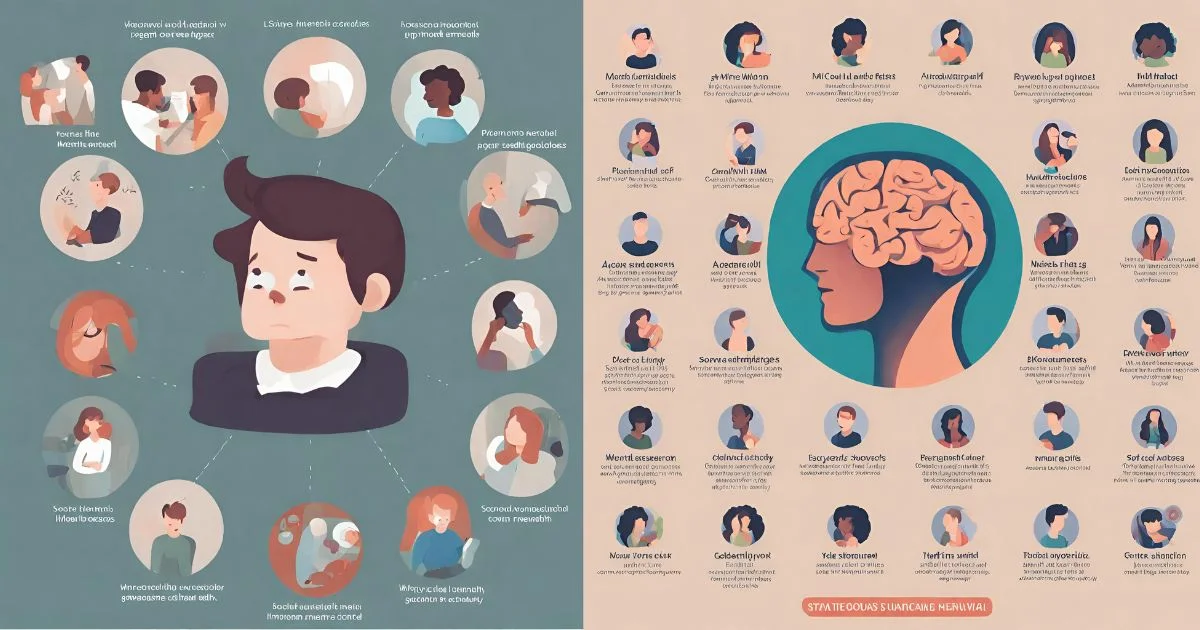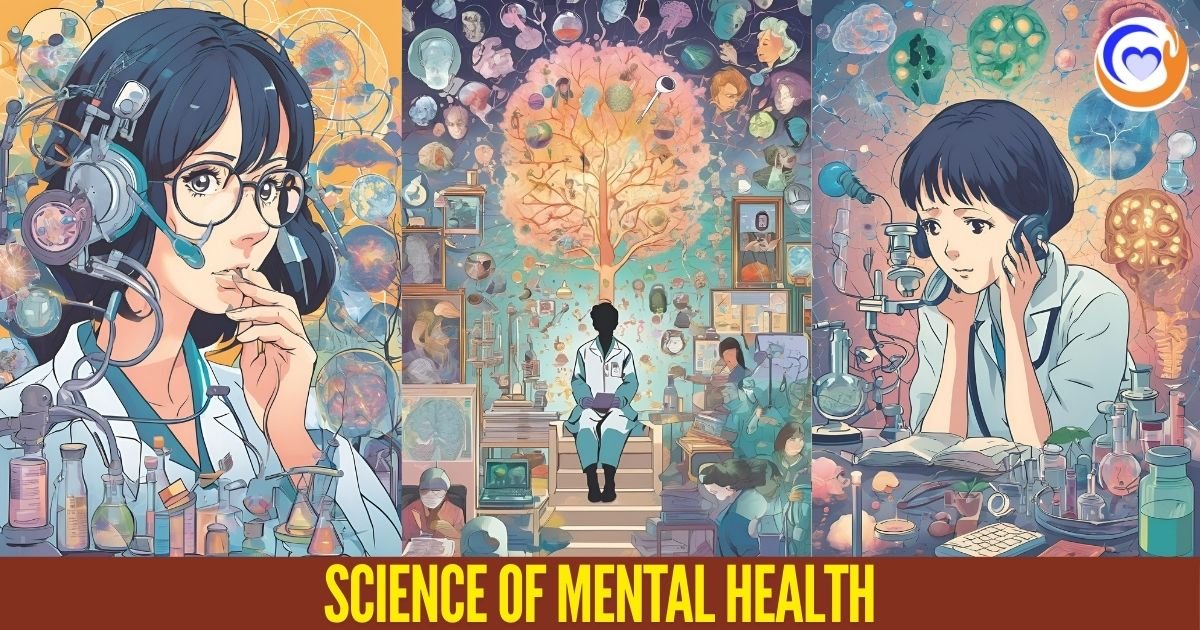Introduction
Mental health disorders are highly prevalent in society, affecting millions of people worldwide. These disorders encompass a broad range of conditions that can vary widely in severity, symptoms, and impact on a person’s life. This essay will provide an overview of some of the most common mental health disorders, their causes, symptoms, and treatments. The importance of reducing stigma and improving access to mental health services will also be discussed. In this article we cover the Some Common Mental Health Disorders.Read More: Mental Health Disorders Disturbed Everyday Activities
Depression Some Common Mental Health Disorders
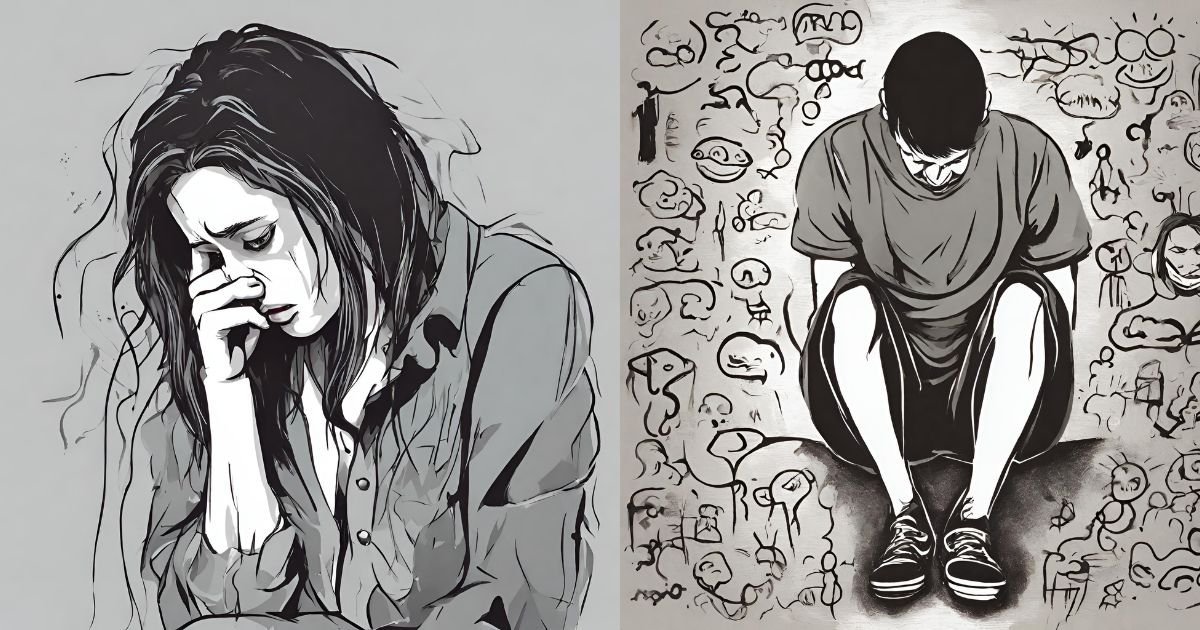 Depression Some Common Mental Health Disorders[/caption]
Depression Some Common Mental Health Disorders[/caption]Depression is one of the most common mental health disorders, characterized by persistent feelings of sadness, hopelessness, worthlessness, and a loss of interest in activities. It affects more than 264 million people globally. The causes of depression are complex and can include a combination of genetic, biological, environmental, and psychological factors.Stressful life events like trauma or loss can trigger depression, as can hormonal changes or imbalances in brain chemistry.
Symptoms include low mood, fatigue, changes in sleep and appetite, feelings of guilt, and thoughts of suicide. Depression can be mild, moderate, or severe, with more severe forms impacting heavily on a person’s ability to function.Treatment usually involves medication, psychotherapy, and lifestyle changes.
Cognitive behavioral therapy and antidepressant medications have proven effective for many people. However, access to treatment remains a major barrier globally. Reducing stigma around depression and increasing mental health literacy are important steps in encouraging people to seek help.
Anxiety Some Common Mental Health Disorders
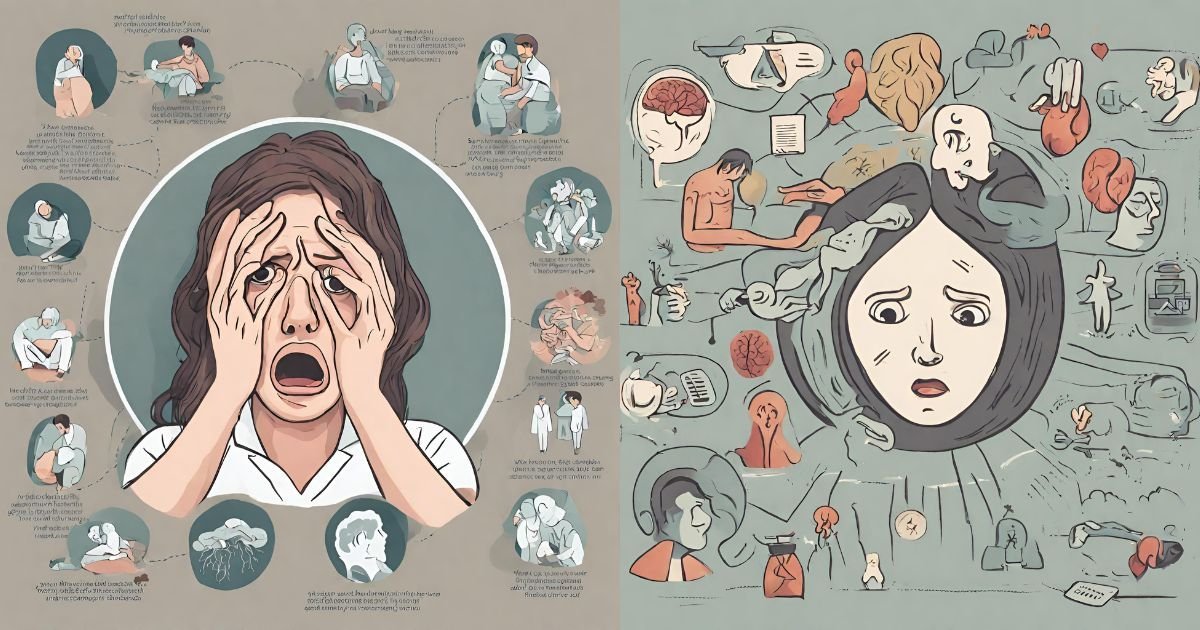 Anxiety Some Common Mental Health Disorders[/caption]
Anxiety Some Common Mental Health Disorders[/caption]
Anxiety disorders are the most common mental health condition, affecting over 280 million people worldwide. They are characterized by excessive and persistent fear, anxiety, and avoidance behaviors. Types of anxiety disorders include generalized anxiety disorder, social anxiety, phobias, panic disorder, obsessive-compulsive disorder (OCD), and post-traumatic stress disorder (PTSD).
Contributing factors can be genetics, brain chemistry, personality traits, and environmental stimuli like trauma. Common symptoms are excessive worry, feelings of panic, restlessness, fatigue, and difficulty concentrating. Physical symptoms like increased heart rate, nausea, and muscle tension may also occur. Anxiety disorders can significantly impact a person’s quality of life if not well managed.
Treatment often combines medication such as antidepressants, therapy like cognitive behavioral therapy (CBT) to change thinking patterns, and relaxation techniques like mindfulness. Providing anxiety disorder education and early intervention services are important for improving outcomes.
Bipolar Disorder Mental Health Disorders
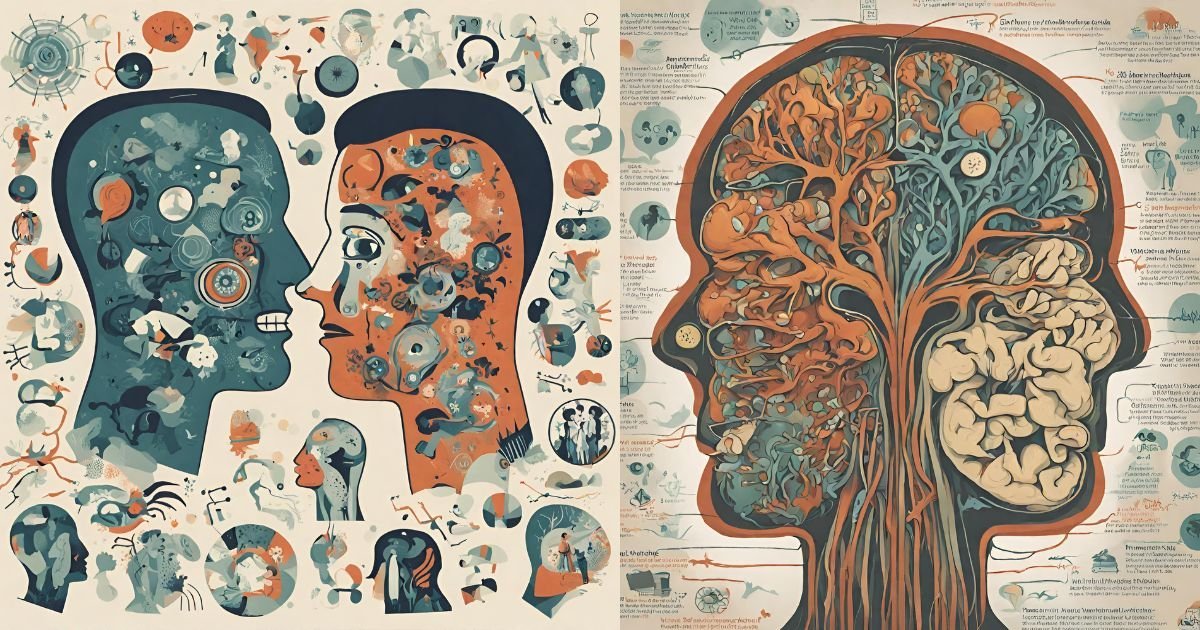 Bipolar Disorder Mental Health Disorders[/caption]
Bipolar Disorder Mental Health Disorders[/caption]
Bipolar disorder affects around 45 million people worldwide. It is characterized by extreme shifts in mood and energy levels between manic and depressive episodes. These episodes can last from days to months. Manic episodes may involve elevated mood, hyperactivity, impulsiveness, and sleep deprivation. Depressive episodes involve very low mood, low energy, feelings of emptiness, and suicidal thoughts.The exact causes are unknown but likely involve genetic, biological, and environmental factors. Stress and traumatic life events can also trigger episodes. Symptoms can be severe enough to impact a person’s functioning and personal relationships.Treatment is focused on managing symptoms and preventing relapse, using medications like mood stabilizers and psychotherapy like CBT. Hospitalization may be necessary during acute episodes. People with bipolar require long-term and coordinated management of their condition. Reducing stigma and improving social support is also important.
Schizophrenia
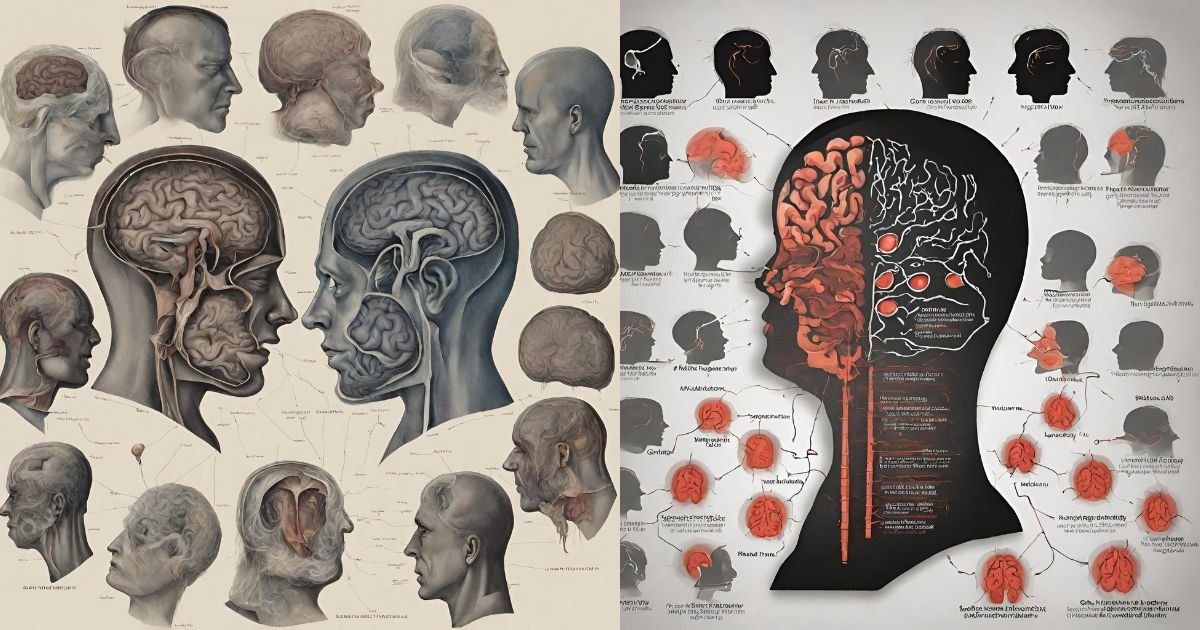 What is Schizophrenia
What is Schizophrenia
Schizophrenia is a chronic and severe mental disorder affecting around 20 million people worldwide. It usually emerges in early adulthood and involves a “loss of contact with reality”. People may experience delusions, hallucinations, disorganized speech and behavior, impaired cognitive ability, and lack of motivation.Schizophrenia has a strong hereditary component, but environmental factors like early life trauma and substance abuse can also contribute. Treatment focuses on managing symptoms through antipsychotic medications and psychosocial interventions.Hospitalization may be required during acute psychotic episodes. While there is no cure, many people with schizophrenia can live independently and manage their condition with appropriate long-term support and access to services. Reducing stigma and discrimination is vital for improving outcomes. More research is still needed into the exact causes and potential new treatments.
Eating Disorders
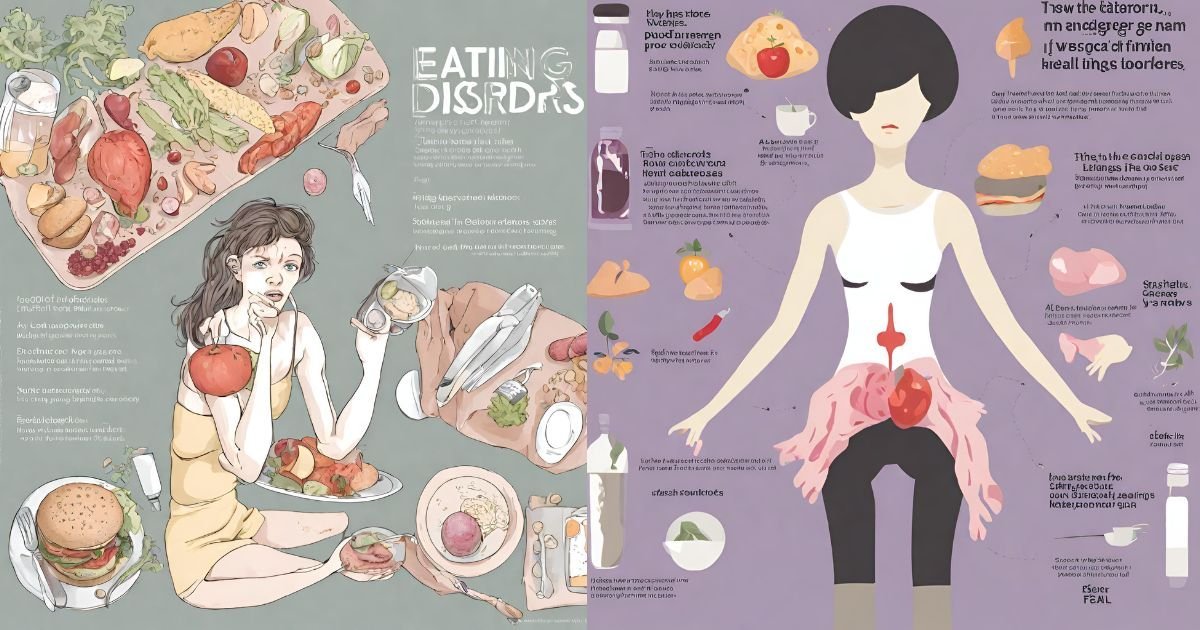
Eating disorders involve extreme disturbances in eating behaviors and body image. The main types are anorexia nervosa, bulimia nervosa, and binge eating disorder. Contributing factors include psychological issues like poor self-esteem, biological traits like genetics, and sociocultural influences like pressure to be thin.Anorexia involves restricting food intake leading to dangerous weight loss. Bulimia involves binge eating followed by purging behaviors like vomiting. Binge eating involves consuming large amounts of food in a short time without purging. All eating disorders can severely impact physical health and emotional well-being.Professional psychological treatment and nutritional rehabilitation are required. For many people, a full recovery is possible with intensive support. Improving awareness and early intervention along with reducing unrealistic societal beauty standards can help prevent these potentially fatal disorders.
Personality Disorders
Personality disorders are characterized by inflexible patterns of thinking and behavior that differ markedly from societal norms and expectations. They affect how people perceive themselves and relate to others. Examples include borderline personality disorder, antisocial personality disorder, and narcissistic personality disorder.Personality disorders often have roots in childhood trauma and genetic factors may play a role. Common symptoms are unstable self-image, impulsivity, intense but unstable relationships, abandonment fears, lack of empathy, and frequent mood swings. Treatment can be challenging but often includes psychotherapy like dialectical behavior therapy.Building coping skills and making positive lifestyle changes can help people manage their symptoms and improve relationships. Reducing the stigma around personality disorders is important as they are often misunderstood. With appropriate support, many people can lead fulfilling lives despite their challenges.Read More: Mental Health Issues and Illnesses
Substance Use Disorders
Substance use disorders occur when the use of alcohol, illicit drugs, or prescription medications becomes recurrent, compulsive, and difficult to control despite harmful consequences. Dependence can involve physical symptoms like tolerance and withdrawal.Psychological dependence involves cravings and the inability to abstain. Problem use of substances like alcohol, opioids, cocaine, cannabis, and amphetamines can lead to health complications, disability, and even death. Both genetic and environmental factors contribute, like family history and exposure to trauma or stress.Treatment options include detoxification, behavioral therapies, support groups, and medications. Long-term recovery requires significant lifestyle changes and social support. Harm reduction approaches like needle exchanges help minimize risks for those not yet ready to abstain. Reducing substance use stigma and expanding access to affordable, quality treatment is essential for improving outcomes.
Prevalence and Impact
Mental health disorders are extremely common. According to the World Health Organization, around 1 in 8 people globally live with a mental disorder. These conditions are the leading cause of disability worldwide. They can severely impact personal relationships, physical health, productivity, and quality of life if not addressed.However, with appropriate treatment and support, most people can manage their symptoms and lead fulfilling lives. Stigma remains a major barrier to help-seeking. Discrimination against those with mental illness is still far too common.There is an urgent need to improve mental health literacy and access to quality services worldwide. With greater awareness and support, we can create communities where those with mental health disorders are understood, accepted, and empowered.
Treatment Barriers and Stigma
Despite their prevalence, the majority of people with mental health disorders do not receive adequate treatment. Global treatment gaps exceed 50% for conditions like anxiety and depression. Barriers include lack of awareness, inability to access or afford services, and fear of judgment or discrimination.Stigma remains a key factor preventing people from seeking help. Mental illness is often misunderstood, feared, and stigmatized in society. People may be labeled as dangerous or incompetent. Discrimination can occur in education, employment, healthcare, and housing.Stigma can cause feelings of shame, lower self-esteem and reduce quality of life. Anti-stigma campaigns, mental health education, and sharing lived experiences all help tackle stigma. But there is still considerable progress to be made worldwide in reducing stigma and making treatment accessible to all.
Importance of Early Intervention
Early intervention is critical when it comes to mental health disorders. The earlier a condition is identified and treatment begins, the better the likely outcomes. Young people are particularly vulnerable. Half of all mental illnesses start by age 14, but most cases go undetected and untreated for years.Improving mental health literacy and services for children and adolescents is vital. Teachers, parents, and primary care providers can be educated to recognize early warning signs. School-based mental health programs allow early access to counseling and support.For young people already experiencing symptoms, timely psychosocial interventions can minimize disruption to their education and development. Support should be tailored to individual needs and build on strengths. With appropriate help, many young people can get back on track and avoid more severe long-term illness.
Promoting Mental Health and Resilience
In addition to improving treatment, a holistic public health approach is needed to promote positive mental health across communities. Mental health is more than just the absence of disorders. It involves resilience, social connection, coping skills, purpose, and overall well-being.
Both population-level and individual-level interventions are required. Policies and programs should aim to address social determinants of mental health like poverty, education, and housing. Mental health promotion and prevention initiatives can teach coping strategies and strengthen support networks.
At-risk groups like minority communities require targeted approaches to address unique needs. Schools are ideal settings for universal mental health literacy programs. Workplaces should prioritize employee wellness and work-life balance. Promoting mental health requires a coordinated, multisectoral approach, but has manifold benefits for individual and community wellbeing.
The Road Ahead
While progress has been made, the state of mental healthcare globally remains in crisis. We must continue advocating to break down barriers, reduce stigma and improve access to quality services for all. With appropriate treatment and support, those living with mental health disorders can thrive.We must shift attitudes in society and foster acceptance, compassion, and inclusion. Adequate funding for mental health research is also essential to advance our understanding and develop more effective therapies. Mental health promotion and early intervention should be priorities.By working together, we can envision a future where mental health is valued as an integral component of overall health and well-being.
Conclusion
Mental health disorders are complex conditions impacting millions worldwide. While prevalence is high, stigma and treatment barriers remain obstacles to recovery. Ongoing efforts are required to improve mental health literacy, expand access to care, and promote acceptance in society.A public health approach involving prevention, early intervention, and appropriate treatment tailored to each person’s needs will enable those with mental health disorders to live fulfilling lives. Recovery is possible, but we must ensure mental health is prioritized on both a societal and individual level.Collaborative action and a compassionate approach are the way forward to supporting mental well-being for all.
FAQs
Q: What are the 10 Most Common Mental Health Disorders?
A: The 10 most common mental health disorders are depression, anxiety disorders, bipolar disorder, ADHD, PTSD, borderline personality disorder, obsessive-compulsive disorder, schizophrenia, eating disorders, and autism spectrum disorder.
Q: What are the 12 types of mental disorders?
A: The 12 main types of mental disorders are anxiety disorders, mood disorders, personality disorders, psychotic disorders, eating disorders, trauma/stress disorders, substance abuse disorders, neurodevelopmental disorders, neurocognitive disorders, dissociative disorders, somatic disorders, and sexual disorders.
Q: What are the seven most common mental illnesses?
A: The 7 most common mental illnesses are depression, anxiety disorders, bipolar disorder, schizophrenia, PTSD, borderline personality disorder, and ADHD.
Q: What are the top 5 major mental health disorders?
A: The top 5 major mental health disorders are depression, anxiety disorders, bipolar disorder, schizophrenia, and addictive behaviours/substance abuse disorders.
Q: What is the #1 most diagnosed mental disorder?
A: Depression is the #1 most diagnosed mental disorder. Estimates show depression affects over 300 million people globally.
Q: What are the top 2 mental illnesses?
A: The top 2 mental illnesses are depression and anxiety disorders. Depression affects around 264 million people globally, while anxiety disorders affect approximately 284 million people.
Q: What are some common signs and symptoms among the various categories of mental health disorders?
A: Some common signs and symptoms seen in many mental health disorders include emotional distress, withdrawal from others, difficulty concentrating, sleep disturbances, changes in eating habits, confusion, irrational fears, hallucinations, delusions, and suicidal ideations.
Q: What are some common mental health disorders?
A: Some of the more common mental health disorders are depression, anxiety, bipolar disorder, schizophrenia, PTSD, OCD, and addictive behaviours.
Q: What are some of the common signs and symptoms of mental health disorders?
A: Common signs and symptoms can include emotional distress, social isolation, mood swings, irrational thoughts, paranoia, confusion, hallucinations, poor concentration, changes in sleep patterns, delusions, and substance abuse.
Q: What are some common issues that affect people with mental health disorders?
A: Common issues that affect people with mental disorders include stigma, lack of support systems, unemployment or inability to work, comorbid physical health issues, lack of access to healthcare, homelessness, social isolation, legal problems, poverty, and an increased risk of suicide.
Q: What are some common myths or stigmas about mental/emotional health disorders and illnesses?
A: Some common myths include that mental illness is a weakness or character flaw, that people can “snap out of it,” that mental illness is contagious, that mental illness is a result of poor parenting, and that people with mental illness are dangerous or violent. The truth is these are biologically based brain disorders and no one’s fault.
Some Common Mental Health Disorders

